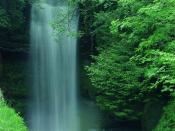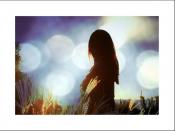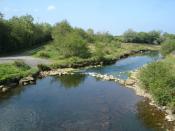Jessica Lee
How does Yeats present the world the child is taken to?
'The Stolen Child', one of Yeats earliest poems explores Irish folkore, and the escape of a mortal world to one of magic and passion. This magical world which Yeats develops within the poem however, transforms dramatically in the final stanza, presenting this world in a sinister fashion.
Within the first three stanzas, Yeats depicts an isolated etherly world which resembles Irish folklore and fables. This ballad poem is stereotypical about romance of love represents this idealised world Yeats creates. Starting stanzas 1-3 with the inquisitive word 'where', thus intriguing the reader to this mysterious location. By repeating it several times intensifies this magical unknown location, also highlighting how it is isolated. Yeats writes about secluded locations such as 'rocky highland' 'Sleuth Wood' 'lake' and 'far off by furthest Rosses'. 'Rosses', which is an allusion to Yeats seaside village in Ireland emphasizes the isolation of the location.
In addition, the nature concept of 'woods' and 'highland' which tends to be a place of tranquillity contrasts significantly to the urbanised world. The rural location of 'woods' which tends to be homes for animals heavily relates to Irish fables, thus this magical attraction a child would possess. For example, the animals which are depicted in The Stolen Child are 'herons', 'water rats' and 'slumbering trout'. 'Herons' tends to be a symbol of freedom, evident in Yeats' other works such as The Swans in Coole Lake. Here, it can symbolise the escape of a mortal world into this magical idealised world. Indicating that the 'leafy island' lies in the middle of the lake accentuates this alienated location where the fairies live. Also, a prominent feature which makes this world magical is the fact it is placed at night...


